From Otranto to Maglie amidst menhirs, Greek-Byzantine atmospheres and views of Italy's most easterly coastline
Cycle tourism
The route begins from the Idro municipal road, adjacent to the large car park at the entrance to the historic town and which runs up the valley of the same name. A short, slightly uphill stretch allows us to turn right onto the 'Papi' road and thus enter the roundabout leading to the provincial road for Giurdignano. After a few hundred metres we continue to the right on a low-traffic road which is also the starting point for the so-called "Maglie - Otranto slow fruition route" created when the SS16 was widened. The red colour of the asphalt and the presence of rest areas make pedalling or walking very pleasant and peaceful. The impression is that of being on a cycle path, even if there are no restrictions on car access (which, however, are very rare and limited to landowners).
After travelling almost 3 km from the starting point in Otranto, we leave behind the sight of the imposing four-lane road on which cars parade at high speed and finally enter the peaceful Salento countryside. Here it is the colour of the red earth and the harmony of the dry stone walls that accompany us, even if you can't help but feel a sense of loss and almost bewilderment for what until a few years ago was a lush green-silver vegetation of olive trees of the most diverse shapes and imposing sizes. The scourge of Xylella (a bacterium that has struck Salento and causes the trees to dry out rapidly) has profoundly changed the landscape, which is now trying to regenerate itself through new replanting. And indeed the countryside is alive and well despite everything.
At the junction with the provincial road, you can choose whether to continue straight ahead along the cycle path or to bypass the SS16 immediately following the track, thus following the cycle path on the north side that leads to Palmariggi (10 km). A brief stop in the central square, in view of the two circular towers that once formed the larger Aragonese Castle and the Church of the Madonna della Palma, then continue along Via Risorgimento and Via Antico Cammino to reach the Sanctuary of Montevergine, built in 1707 over a rock church that still houses a precious Byzantine icon. A pilgrimage destination, the hillock that houses the Sanctuary is a large pine forest with picnic areas, useful in the summer months to regenerate a bit, especially if you are travelling with children, and from which you could take the path that leads further north to Masseria Torcito, but off our itinerary.
The pleasant road from Masseria Gianicola leads to Bagnolo del Salento (15 km). In the large central square, where the Church of San Giorgio and the imposing Palazzo Papaleo stand out, there is a small fountain belonging to the Apulian Aqueduct, which is a good place to fill up with water and continue the journey. Along Via Materdomini, at the cemetery, the 4-metre-high menhir Croce di Bagnolo marks the crossroads, allowing us to continue to the right and avoid the provincial road, enjoying the peacefulness of the Salento landscape. The menhirs, scattered throughout the Salento region but especially in this area, date back to the early Middle Ages and were used as sacred sites by the rural population.
Just under 1 km away, turn left towards Cursi (km 19), the capital of Lecce stone, due to the large number of quarries from which the raw material is extracted that makes the façades of Salento's palaces and churches shine, and whose malleability has made Lecce Baroque famous. The eco-museum in Piazza Pio XII, inside the Frantoio Ipogeo di Palazzo De Donno, often hosts art installations, cultural events and exhibitions related to local stone and the stones of Puglia, as well as being a tourist infopoint. Just outside Cursi, a small diversions allows you to explore the small hamlet of Morigino with its 16th-century church of San Giovanni Battista, imposing both in the proportions of its façade and its interior colonnade, adorned with frescoed altars. The diversions is short-lived and we unfortunately have to return to the provincial road to carefully tackle the stretch that bypasses the state road, which fortunately lasts only 1 km.
We are now in Maglie (km 23), the most densely populated town in the Idruntine area, which offers more than a few opportunities for recreation in its historic centre full of monuments, shops and cafés and centred on Piazza Aldo Moro, named after the statesman and former Italian Prime Minister who was born here. It might be worth visiting the Alca, the early 20th-century cultural complex that houses the municipal library and the Decio de Lorentiis Museum of Palaeontology and Palethnology (http://www.alcamaglie.it) at 117 Via Vittorio Emanuele. A dive into the prehistory of Salento.
Maglie has always been an industrious town, and there is much evidence of industrial archaeology to prove it. The former 'Fratelli Piccinno' factory, an old cabinet-making workshop that produced furniture and decorative arts, is unmistakable in its Art Nouveau architecture just down the road from the Via Vittorio Emanuele, opposite the austere Rodia hotel. It should become a museum dedicated to the heritage and glorious past of Magliano factories and specialities. Don't miss a visit to the Benedetto Cavalieri pasta factory, founded in 1872 (located in Via Garibaldi, 64) and also to the former Lamarque tannery, now a historic residence called 'Corte dei Francesi'. Villa Tamborino is an elegant historical garden, now a public park, of which you can admire, in addition to the varied plant elements, some bridges and an octagonal belvedere in oriental style.
The route continues towards Scorrano (km 27) and will take you straight into its ancient heart, which looks like a sort of medina with narrow, winding streets, palaces and houses that are now being restored. If there is one period in which it is worth being in this small Salentine town, it is from 5 to 9 July, for the festival of Santa Domenica, when you will be literally stunned by the magic and shapes of the Luminarie (illuminations). The tradition of illuminated decorations comes directly from the Baroque era, which has been documented in Scorrano since at least 1549 and has never stopped since. The De Cagna and Mariano companies have now taken the art and magnificence of Salento's illuminations all over the world, and it will be difficult for you to forget a festival like Santa Domenica in your life.
But we resume our journey, once again paying attention to the cars on the provincial road that bypasses the SS275. Be careful because immediately after the bridge we turn right, returning to a quiet rural road that almost takes us back in time, to the Middle Ages. On the right, among some pine trees, you will notice a place brought back to its former glory by a meticulous restoration that has interrupted a centuries-long oblivion: this is the church of Santa Maria di Misciano, named after the medieval village of the same name now in the territory of Muro Leccese (km 31). A treasure trove of frescoes that is well worth a visit. Fortunately, as is often the case in the Salento region, citizens and volunteers are the ones who take care of these places, and the best advice is to ask the "Muro Leccese Città d'Arte" and "Custodi" associations for information (look them up on Facebook). They will also be able to guide you through the town museum, housed in the rooms of the Palazzo del Principe, the Protonobilissimo oil mill and the Archaeological Park, as well as the San Domenico Convent. It is no coincidence that we speak of a widespread museum.
At this point on the itinerary, if you have downloaded the shortest route, but also if the time for sightseeing and contemplation has made the hands of the clock run too fast, you return to Otranto. On leaving Muro, a subway with a cycle track allows you to pass another dangerous road in peace. You will find signs for another unmissable place: the La Cutura botanical garden (https://www.lacutura.it/). This is an estate of about 50 hectares that also has a café and restaurant and is one of the most successful experiments in modern botanical collecting in Italy.
Once past La Cutura, turn left onto a provincial road and after just under 800 metres continue to the right: the red cycle path of the slow-moving route takes us back to Otranto, pedalling peacefully and safely for about 10 km.
49,6 km
label_lunghezza_percorso
label_galleria
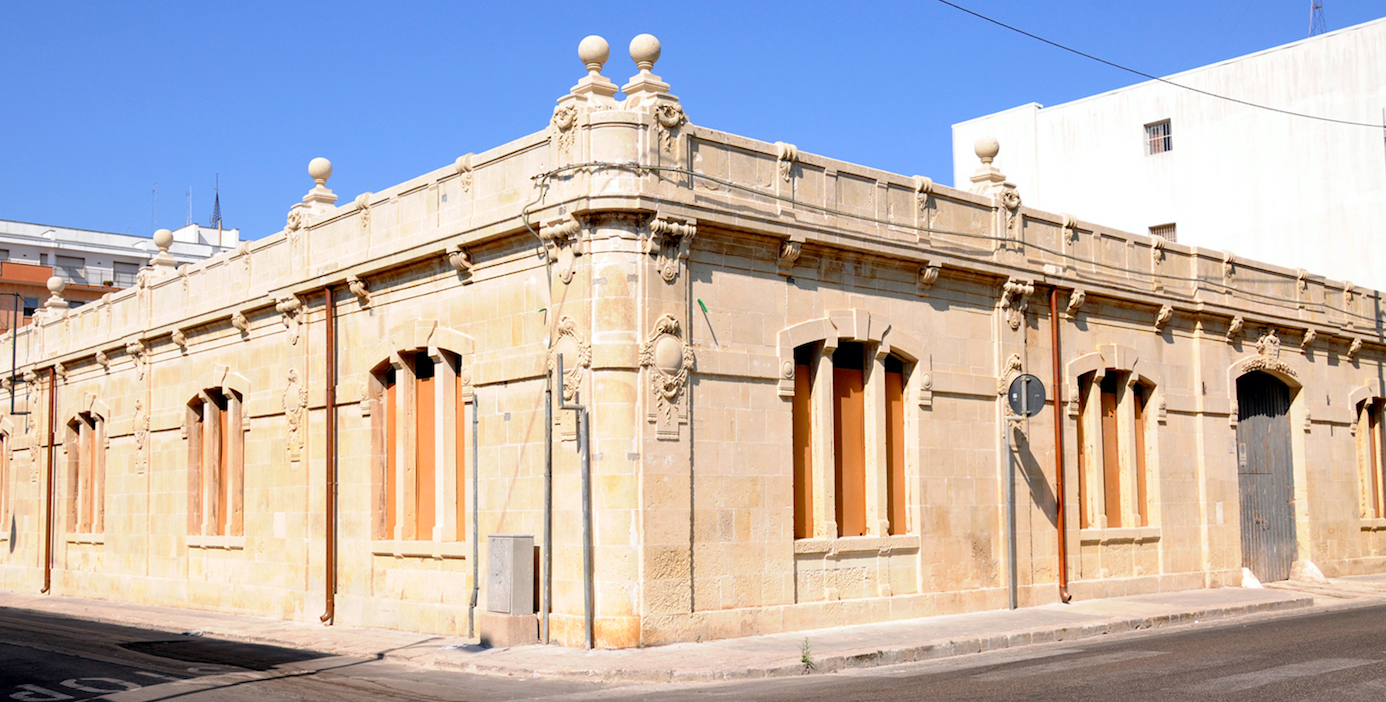
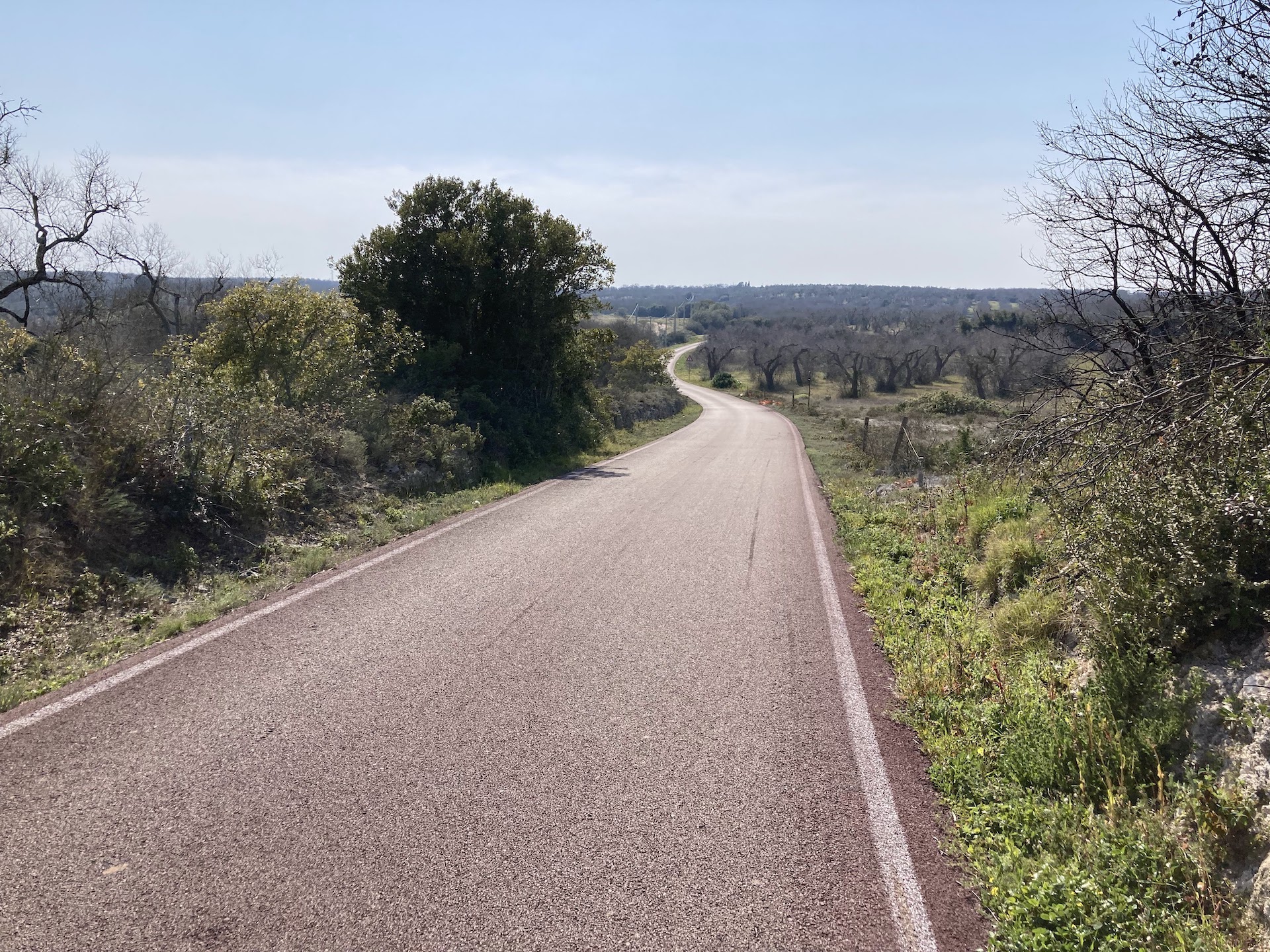
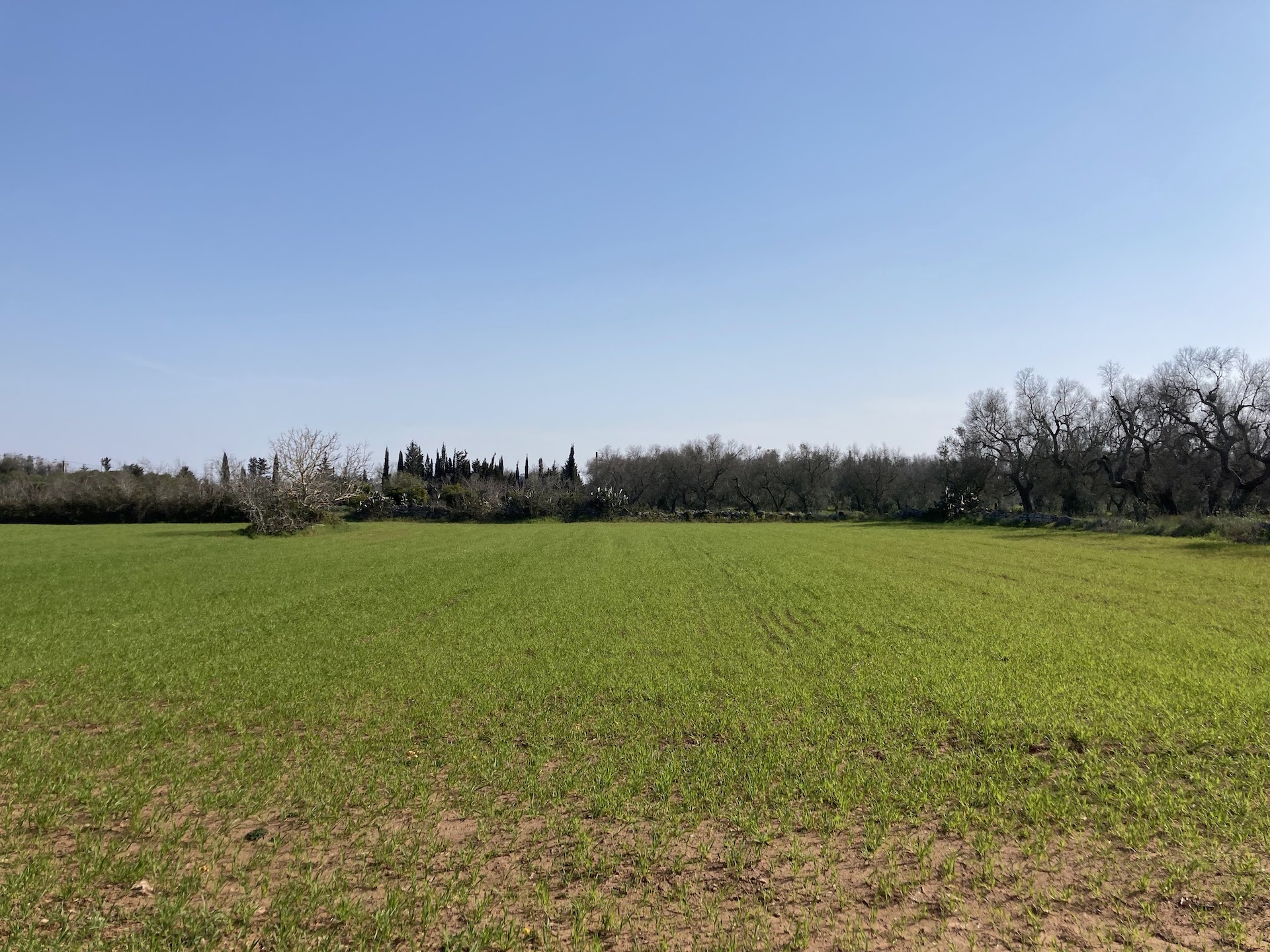
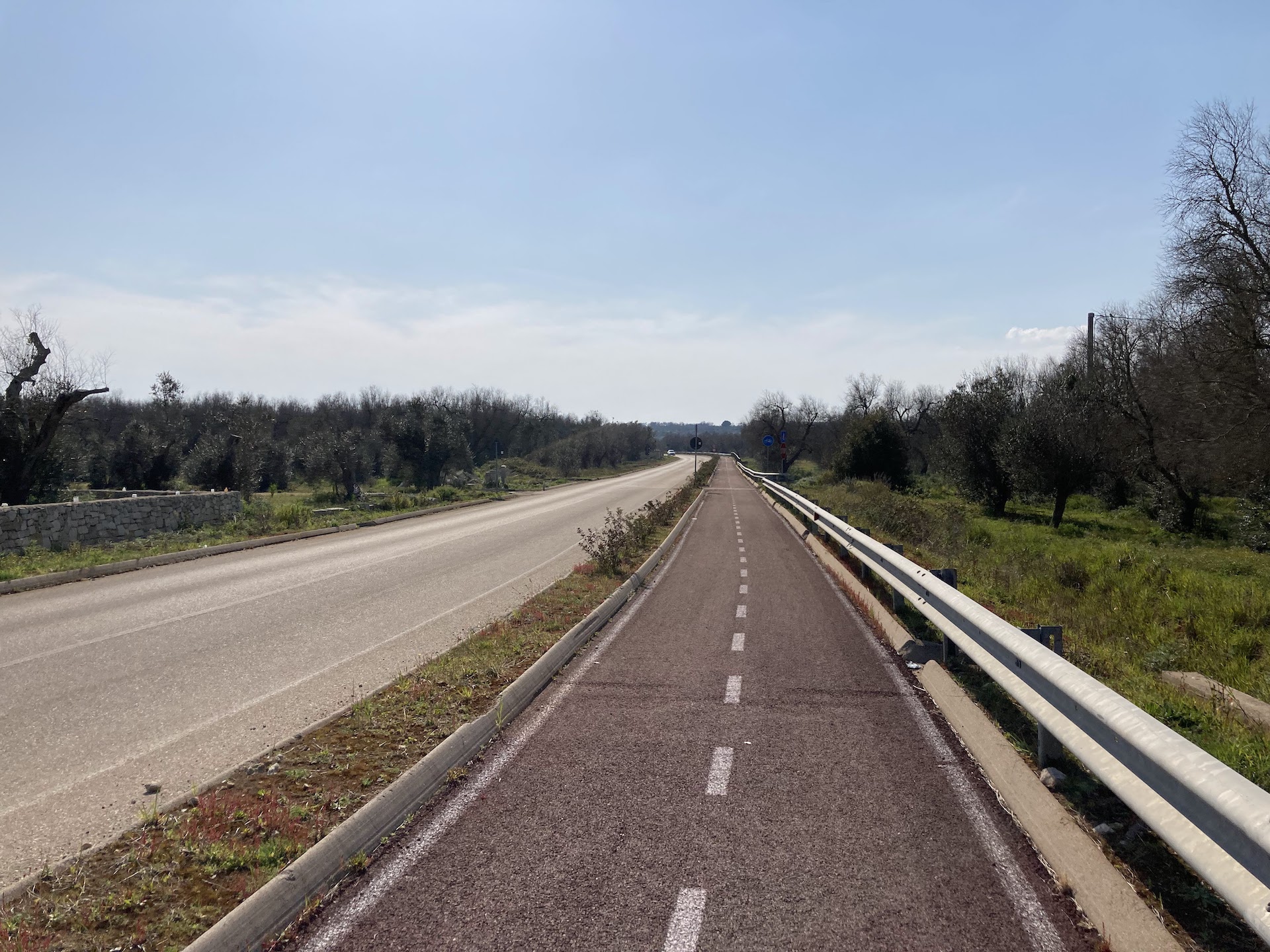
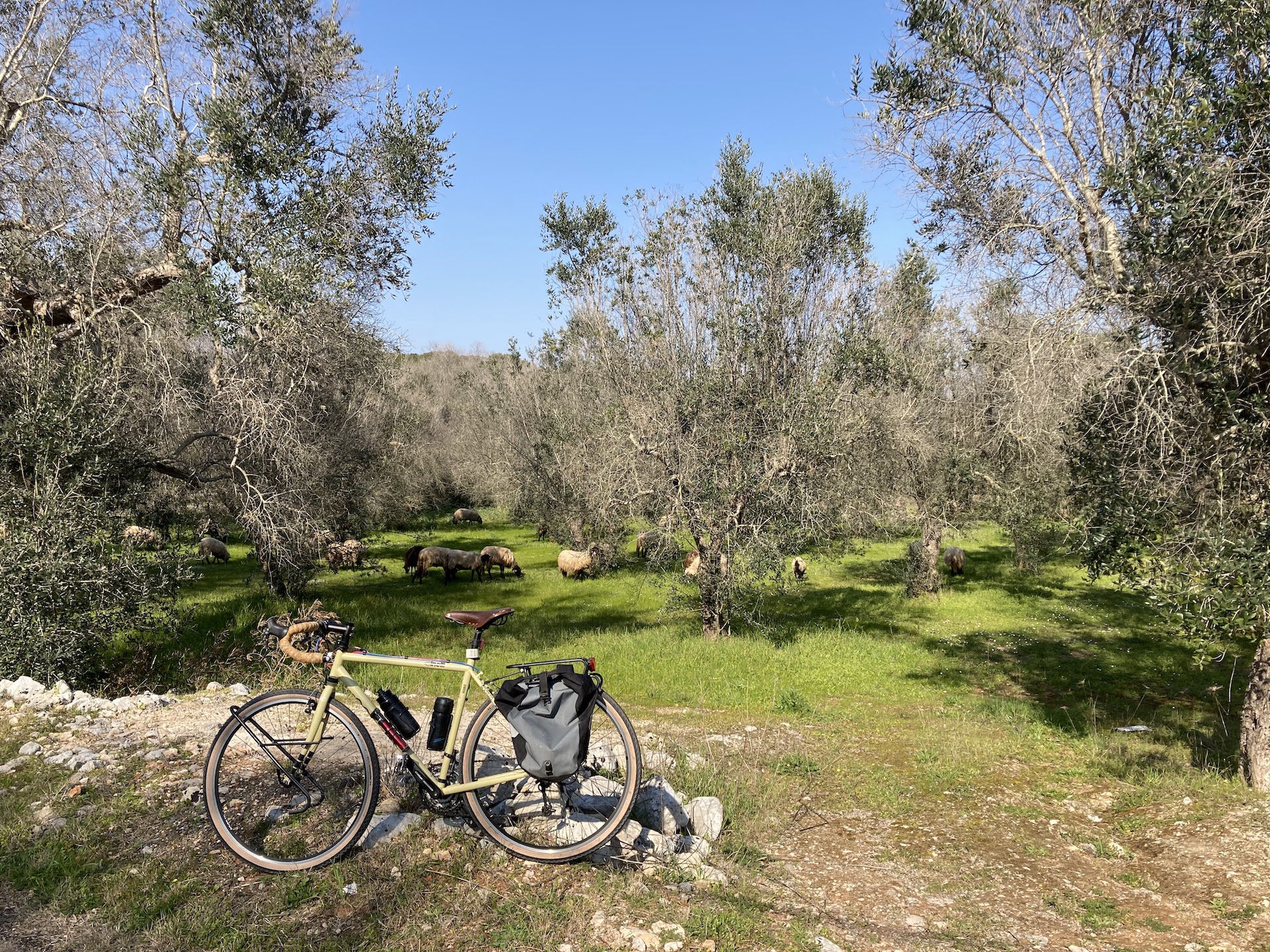
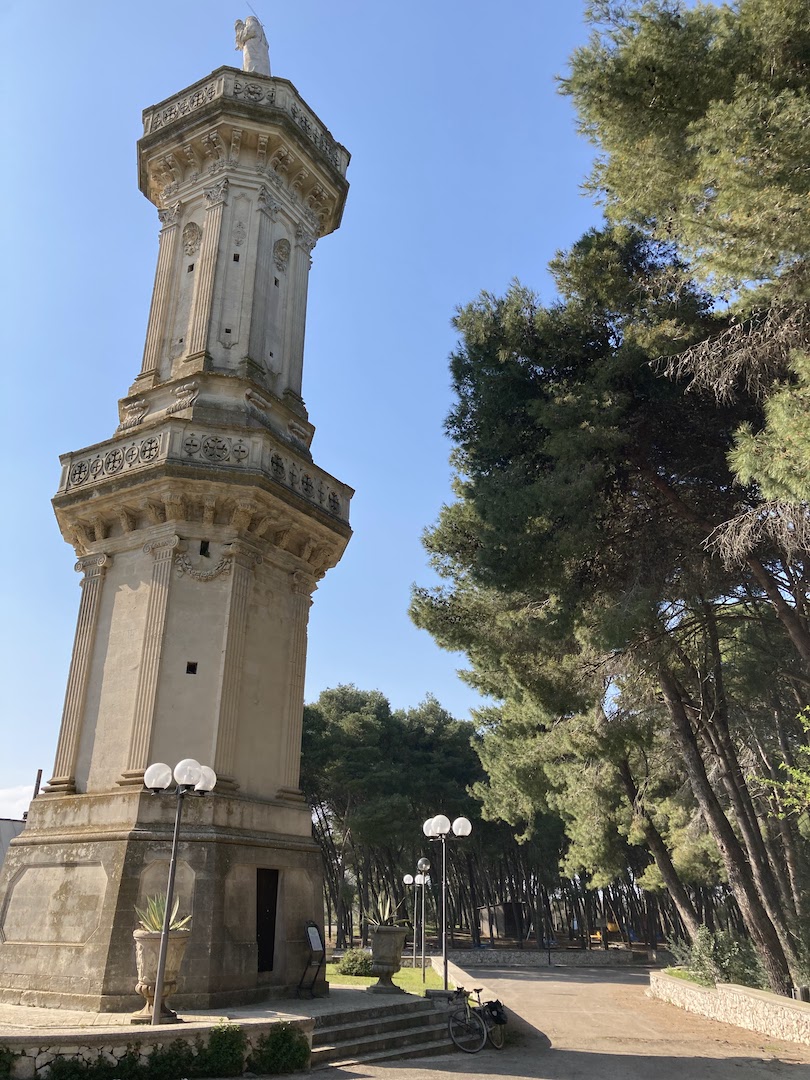

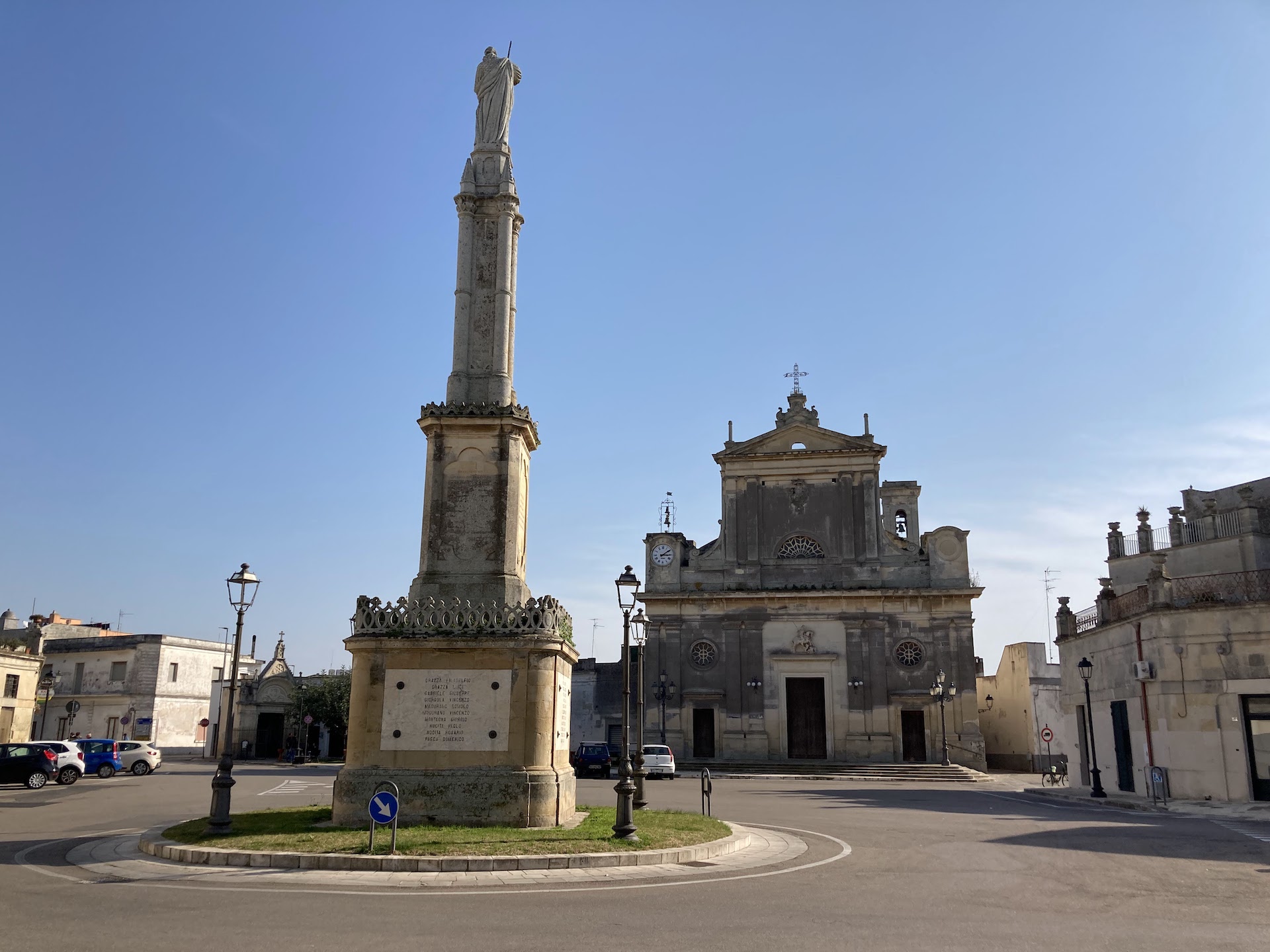
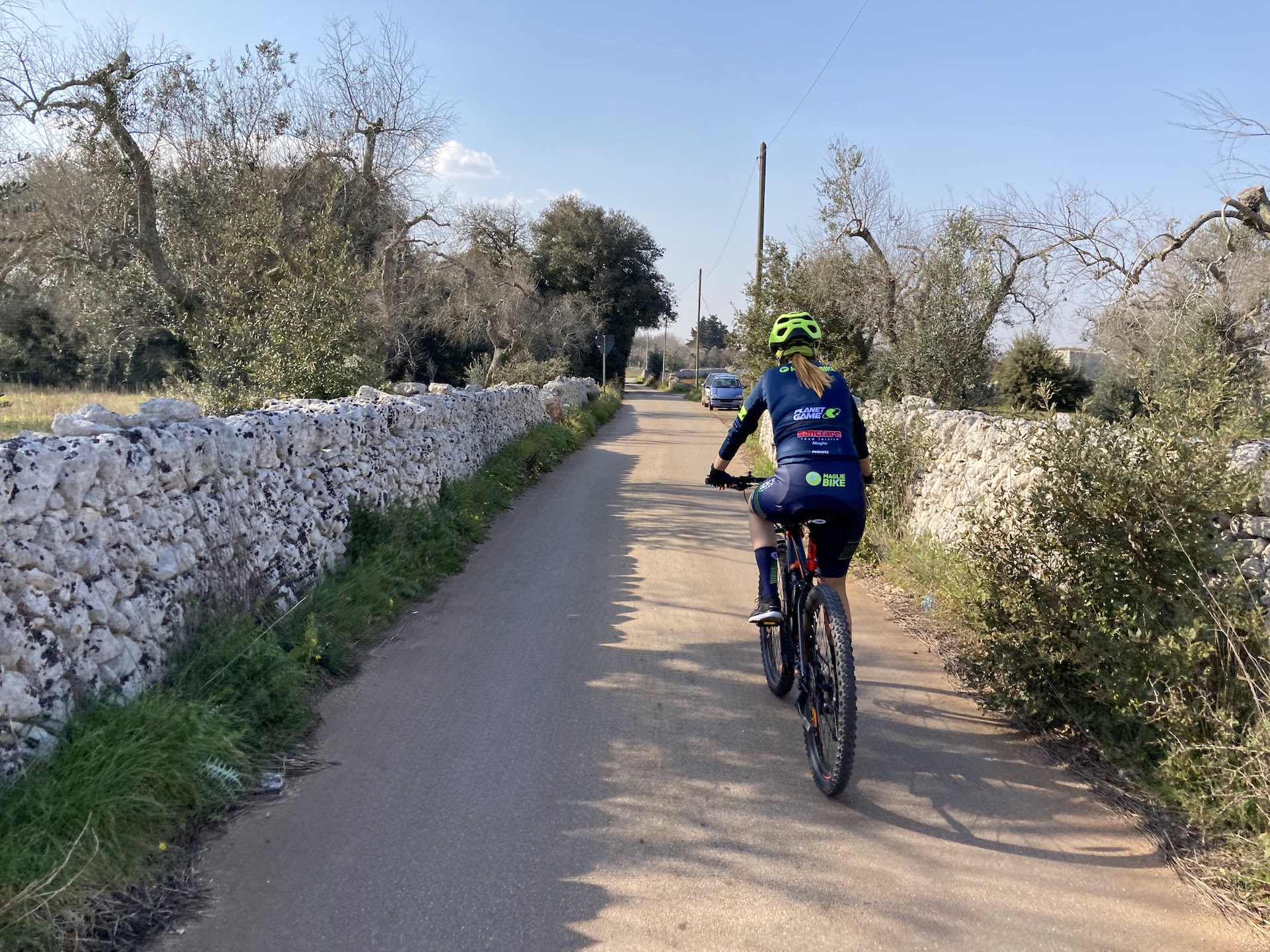
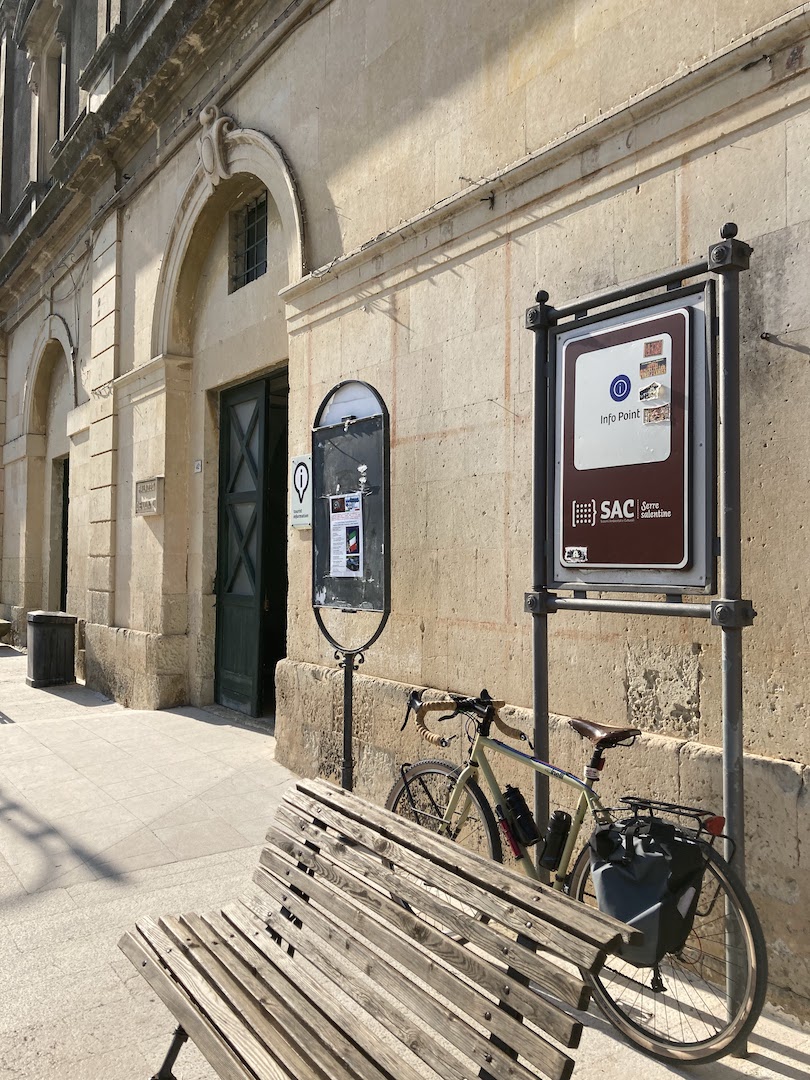
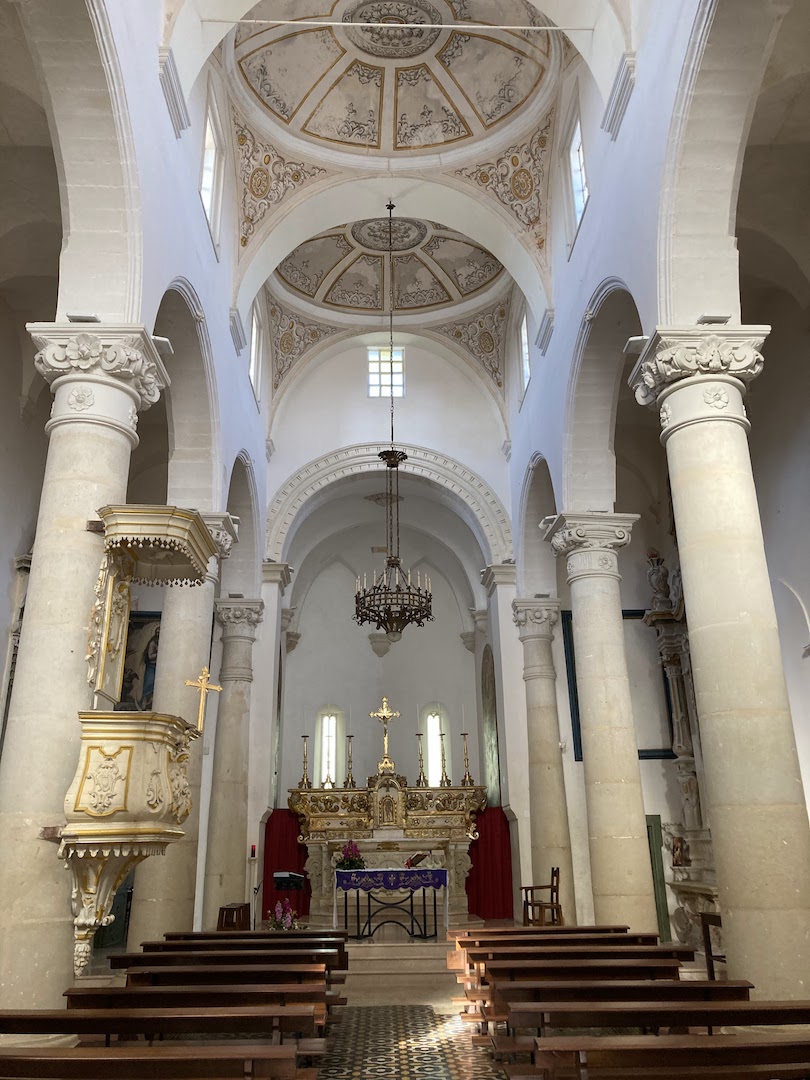

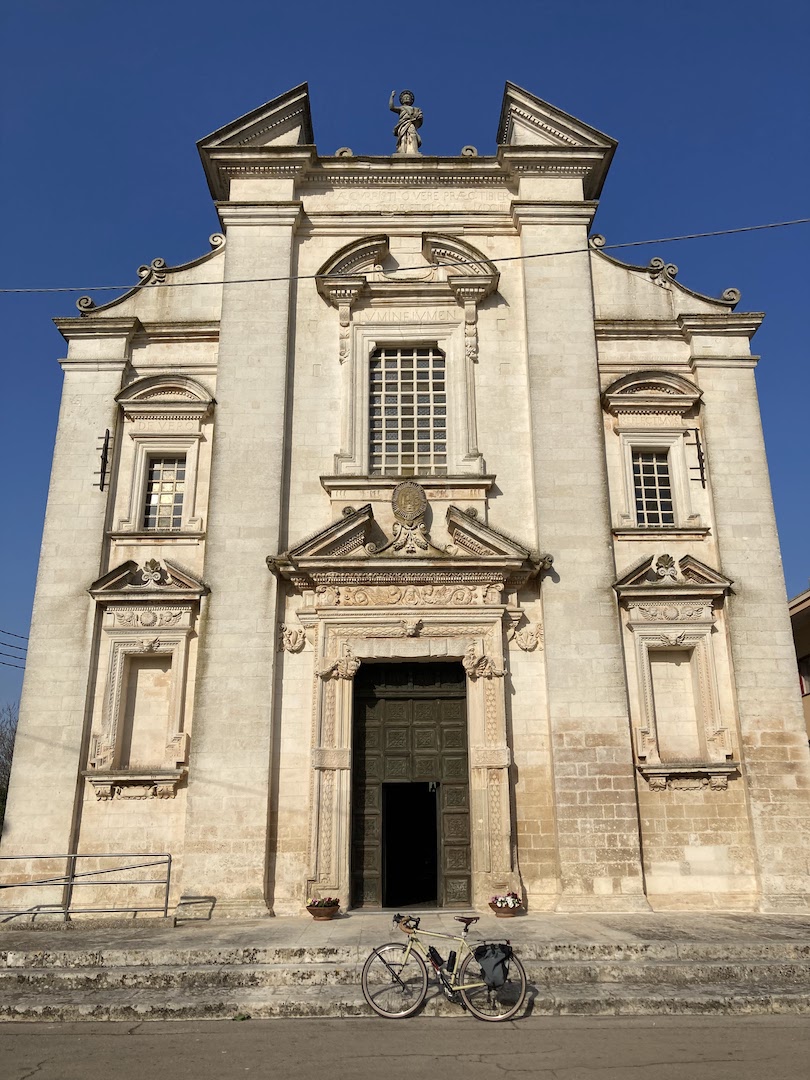
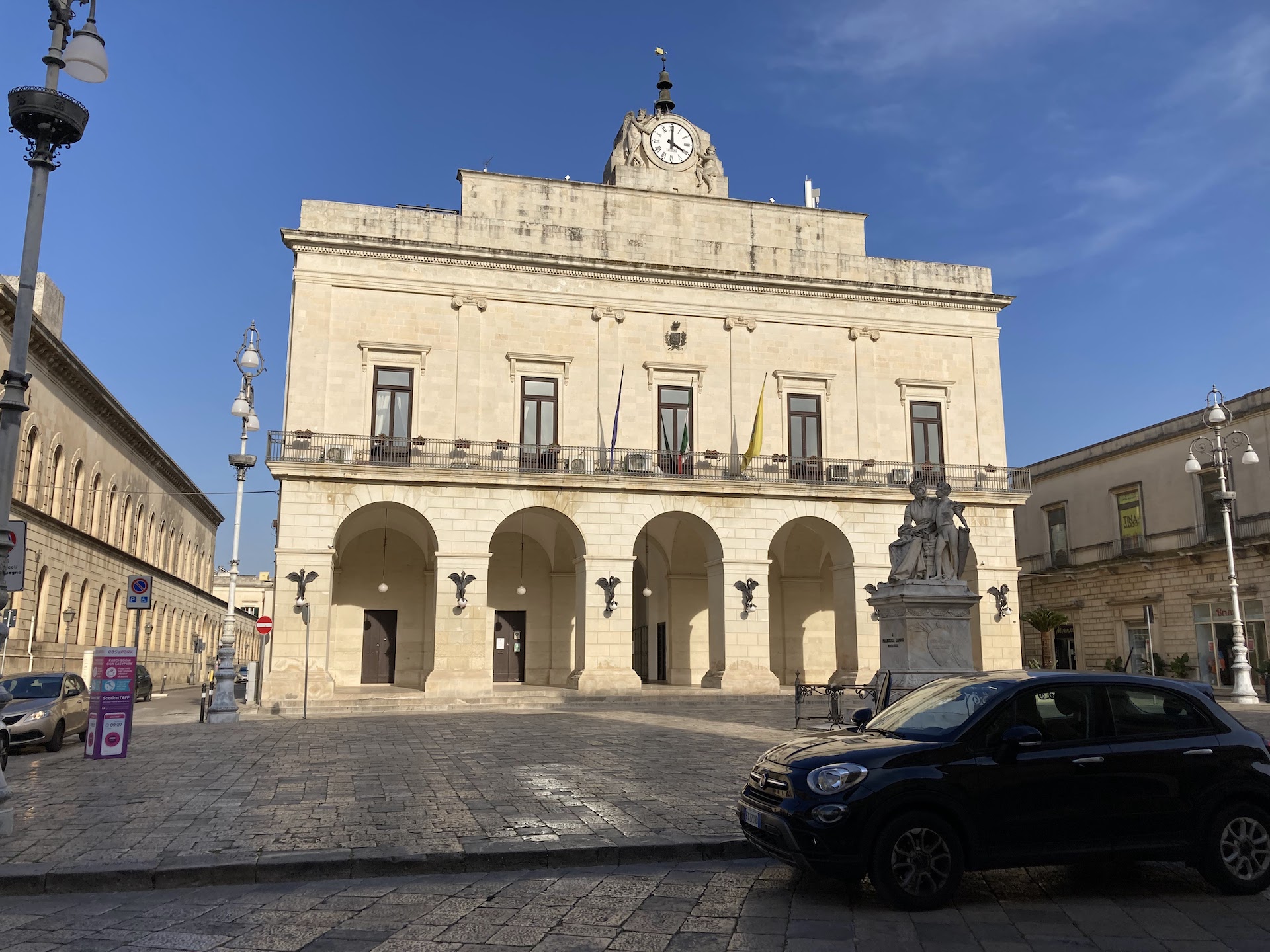

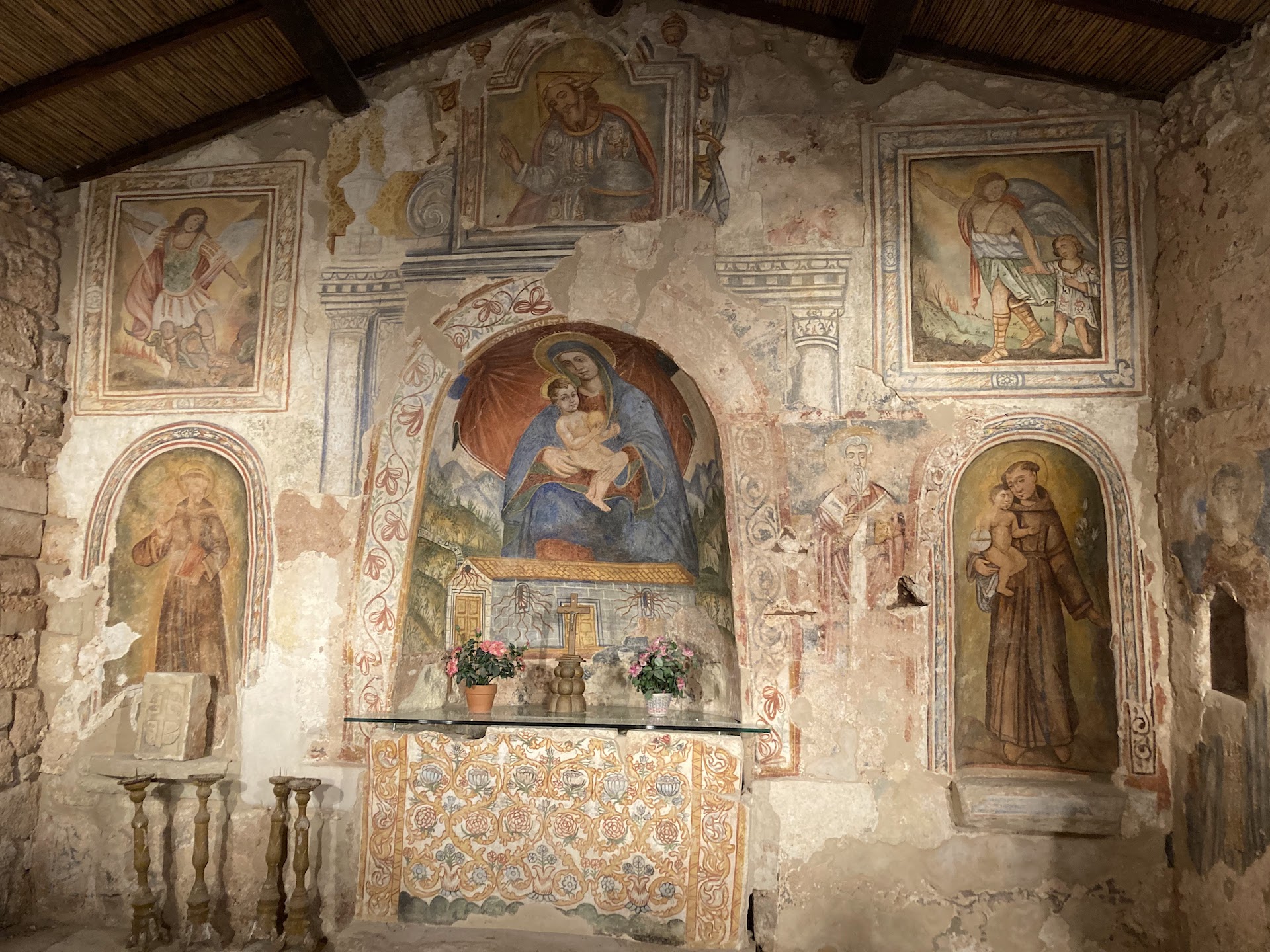
- label_presenza_mancorrenti: No
- label_presenza_aree_sosta: Yes
- label_frequenza_aree_sosta: One area every 5 km
- label_pendenza_long_trasv: Max 5,2%; Min 5,1%
- label_natura_pavimentazione: Asphalt
